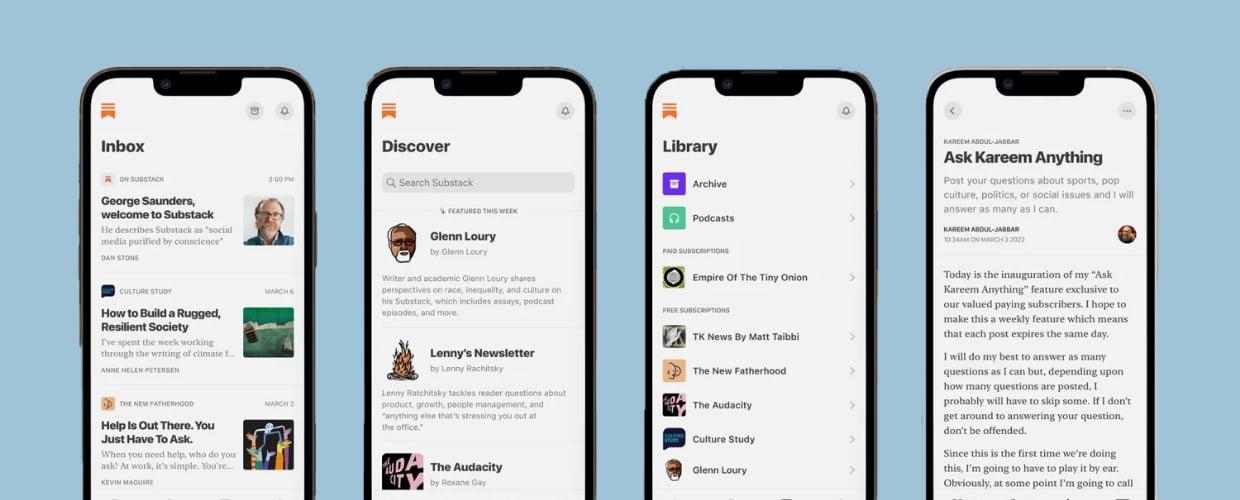As attention spans become shorter and resources get more scarce, marketing leaders are expected to deliver more results in less time than ever before. It’s tempting to jump on the latest trend – whether it’s AI or TikTok or a viral social stunt – to gain short-term attention for your brand.
But ultimately, it’s good to go back to the basics. Marketing is all about providing value to your audiences and connecting with them over the long haul.
That’s why your content marketing strategy is so important: The content itself can create those lasting brand connections, and the process itself requires taking a deeper look at your marketing mindset, taking control of your brand voice and identity, and enticing customers to come to you.
What is content marketing?
Content marketing could also be described as marketing content: It refers to your entire ecosystem of owned branded content, across all your distribution channels. These engaging pieces of information should be developed with your specific target audiences in mind, creating value for them by answering a question, solving a problem, or starting a conversation.
Content marketing takes many shapes. It could be a video series, an e-book, a magazine, a newsletter, a social media campaign, a podcast, or a blog. That’s right, you’re reading an example of content marketing right now.
All of the above can be pieces of content marketing, but the more important thing is how they all work together in your integrated marketing strategy. The sum of many parts can help you achieve a variety of goals, from attracting new customer leads to engaging existing audiences to recruiting talent.
It can sometimes be challenging to delineate between content marketing and traditional advertising. After all, both are intended to grab audiences’ attention, both can be paid forms of promotion, and both are important parts of the PESO (paid, earned, shared, and owned) marketing model.
What sets content marketing apart is that it is usually more informative and detailed. It’s less about “buy our product” and more about “here are solutions that our brand and our products can provide.” It is often longer-form content compared to an advertisement, describing familiar challenges faced by your customers and the unique benefits of your products and services.
It’s part of inbound marketing, designed for your customers to come across your content and engage when they’re actively seeking out information on a certain topic.
How do you know if content marketing is for you?
In many cases, the question is not whether or not content marketing is right for your business. It almost always is! However, you’ll need to consider the right level of content marketing – and the right strategy – to ensure your efforts are sustainable and driving measurable results.
The first step involves defining your target audiences through a buyer persona exercise. This will help you understand what type of customer you are already speaking to, those you want to attract, where they consume content, and how you can align new and existing communications to best reach them.
As with many businesses, you may find yourself wanting to reach several audience segments in multiple industries. The type of content you put out, along with your key messages, must be tailored to each of these audiences.
Key (messages) to success
After developing your buyer personas, it’s essential to develop a messaging framework that outlines your key value propositions to your audiences. These key messages will act as the DNA for your content marketing efforts, and you should think of ways to bring those values to life via your content strategy.
Say you’re selling a meal-delivery service and you’re looking to develop content to attract busy professionals, college students, and families. Each of those groups has vastly different preferences in terms of the content they consume, the channels they use to gather information, and even the language they use. In order for your content to resonate, you’ll need to create content with those distinctions in mind.
The value proposition for the professional audience may be about saving time and hassle, so your key messages for this group should focus on those benefits. You may even think about sponsoring a business-related podcast or having a presence at relevant events and tradeshows to showcase your service to that audience.
For students and families, you may want to lean into budget-friendly options and cost savings. Perhaps the best way to reach them is via email marketing or social media campaigns, with simple infographics showing how much money they could save on food in the first month or year of using the service.
In both cases, a combination of relatable language, relevant outreach channels, and well-defined key messages will make it easier for people to remember the brand. Those key messages will also help you develop other forms of content, such as blog posts, one-pagers, and videos.
Consider your existing marketing ecosystem
Before you make any drastic changes or large investments, ask yourself: “how am I already communicating to my target audiences and what is/is not working?” This is a way to understand what you’re already doing well, what’s not performing as well, and where to wisely reallocate resources.
This is another opportunity to put your buyer personas to work. Do you have a social media video series that’s suffering from low engagement? Maybe short-form videos on social – or certain social networks -- don’t resonate with any of your audiences. Those insights will help hone your social media strategy going forward.
On the other hand, maybe there’s a certain blog post that seems to get significantly more traffic than your other blogs. That would be an indicator that you should post more content regarding the same or similar topics. It also provides you with an already-popular topic that you can create different types of content around, such as a video or an e-book.
Above all, create value
Good content marketing can lead to increased sales, more customers, and more loyal customers, but only if it’s done right. An important rule of thumb when researching, deploying, and measuring a content marketing strategy is to help first, sell second.
Your customers have a lot of questions. By helping them find answers quickly in an engaging way, you’re building trust. If they have a positive experience and they’re able to find what they’re looking for quickly, they’ll likely be back.
Take stock of what is working and what isn’t. Pay attention to performance metrics and KPIs such as website visits, social engagements, e-book downloads, or average time spent viewing a video. A strong content strategy is equal parts art and science, and you can use those metrics to make smarter data-driven decisions.
Need help making sense of it all? Get in touch with us today to learn how to launch or optimize your content marketing strategy.





